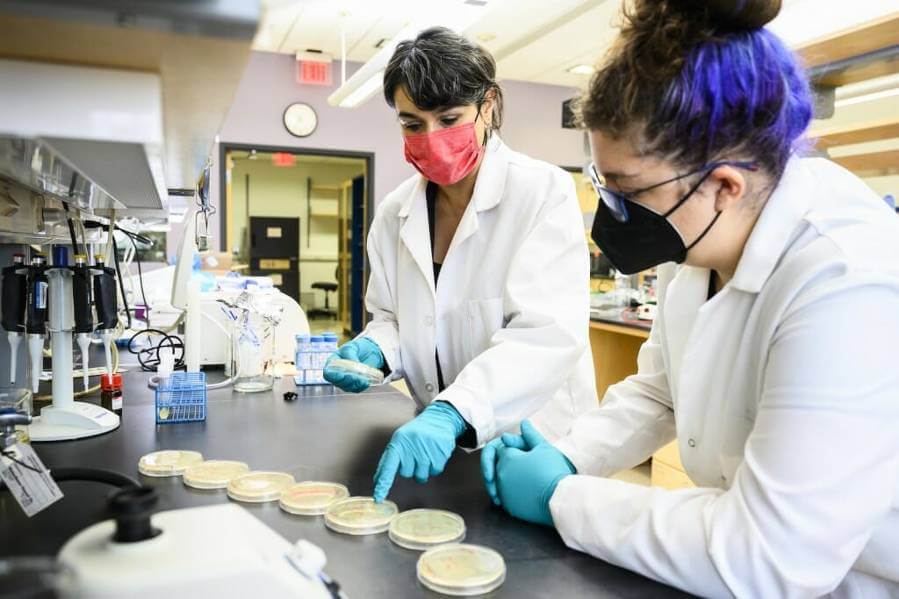Once upon a time, all life on Earth was alien.
But eventually, strange single-celled organisms thriving on a harsh planet gave way to complex, multicellular organisms made up of the basic building blocks we associate with life today, including carbon, oxygen and nitrogen.
Announced by NASA today, a new collaboration of astrobiology researchers across the country working together under a Research Coordination Network called LIFE will spend the next five years dedicating their efforts to understanding this journey from alien to familiar.
Astrobiologists study how life originated here on Earth to better understand how life might evolve elsewhere in the universe.
The network is co-led by the University of Wisconsin–Madison’s Betül Kaçar, alongside Georgia Institute of Technology’s Frank Rosenzweig, Arizona State University’s Ariel Anbar, and University of California Riverside’s Mary Droser. It’s just one part of a larger effort by NASA to bring hundreds of international scientists together to study particular questions in astrobiology.
“LIFE will discern rules of co-evolution (between organisms and their environment) that will enable us to predict how life could evolve on worlds other than our own, and how we might search for it,” explains Kaçar, professor of bacteriology and director of another NASA-funded multimillion-dollar astrobiology research consortium called MUSE, or Metal Utilization and Selection Across Eons. “We know that the journey from single cells to multicellularity relied on critical environmental and biological innovations.”
For instance, the network will explore how the environments on Earth since its formation influenced the development and expansion of multicellular life, the conditions that gave rise to the last universal common ancestor, and how different cells within an organism evolved for different functions. The work requires tools from across scientific disciplines, from geology to chemistry and biology.
“Our planet’s past resembles an altogether alien planet,” says Kaçar. Early Earth would be unrecognizable to us today. “If we can’t understand (life) here, how can we look for it elsewhere? Sometimes what you’re looking for is right in front of you.”
Kaçar describes herself as a biologist on the only planet in the universe (currently) known to host life. Her research group at UW–Madison studies questions related to how life emerged on Earth and began to evolve.
The team is interested in the metabolic foundations of life — how organisms generate and use energy to survive, whether from sunlight, food, or some other means.
“We use modern molecules to reconstruct ancient metabolisms. We aim to unravel how the harsh conditions of our ancient planet shaped life to be the way it is today,” Kaçar explains. “Is life a result of a fluke accident? What is the likelihood of life occurring elsewhere in the universe?”
As part of the LIFE network, her lab will study the “first innovations” that mark key events in evolution, the “biological singularities” that provide clues for discovering complex life beyond our planet.
As the director of MUSE, she coordinates a network of researchers across the country exploring how different metals, such as iron, became critical for life, while others, like zirconium, did not. By retracing the path of how certain elements on Earth became adopted by living organisms, she says, they can turn back Earth’s clock.
“We need to explore why life selected the metals that it did here, to understand how the elemental composition of other planets and moons can impact the chemistries in these bodies,” Kaçar says.
She joined the faculty of UW–Madison in fall 2021, after giving a talk for the Department of Bacteriology: “I immediately knew this was the place to dive deeper and grow this new line of work on the molecular foundations of ancient life.”
Visit this link to learn more about NASA’s RCN.
If our reporting has informed or inspired you, please consider making a donation. Every contribution, no matter the size, empowers us to continue delivering accurate, engaging, and trustworthy science and medical news. Independent journalism requires time, effort, and resources—your support ensures we can keep uncovering the stories that matter most to you.
Join us in making knowledge accessible and impactful. Thank you for standing with us!

